It looks like you're using an Ad Blocker.
Please white-list or disable AboveTopSecret.com in your ad-blocking tool.
Thank you.
Some features of ATS will be disabled while you continue to use an ad-blocker.
share:
Originally posted by Kantzveldt
reply to post by Trueman
Ah but that was Saywite and this is Sayhuite...
But seriously though i hope i've given insight into the greater potential significance of the stone here.
My good friend : You succeeded where I failed calling the attention of many members to this site, thank you for your contribution.
Recently I've been investigating a bit about this area of Peru of in particular and found many interesting places, a lot to discuss and analyze. One of the sites close to Saywite is mentioned in this thread I did :
www.abovetopsecret.com...
Regarding the writing, both are right (Saywite and Sayhuite), as far as I know, andean languages like Runa Simi (Quechua), Aymara and others, had no writing until the spaniards came, they adapted these languages to the spanish alphabet.
reply to post by Trueman
Hi Trueman,
You and Kantzveldt should be ATS's resident South American specialists.
Hi Trueman,
You and Kantzveldt should be ATS's resident South American specialists.
Absolutely fascinating, I'm really glad you've shared this. S & F without a doubt, most interesting & pleasant thread I've read in a while. I look
forward to watching the videos tomorrow, and the extra research that will doubtless keep me occupied in moments of downtime..
I hadn't heard of this particular monolith before, but it does seem to concur with the legends of the pre-Inca time, of 'gods' who demonstrated various practical skills to former slaves/ small tribes of curious natives. The gods were credited with building all the megalithic works in stone, it was they who studied & traversed the Heavens & worked the Earth in a sophisticated manner, coming and going according to their mysterious purposes.
I know you'll have a shedload of professional debunkers & armchair archaeologists who claim that everything in Peru is the work of the Incas - but the Inca themselves claim no knowledge of who built the megalithic structures, except for the oral legends of advanced 'gods' with strange powers. They must find it really funny the way in which modern archaeology/ anthropology consistently tries to ignore or debunk their reports that a pre-Inca civilisation, the very 'gods' even, were the ones responsible for the megalithic settlements of Meso/South America.
If it was their ancestors, they would readily claim the glory for the achievements of their predecessors. As it is, actual Incan stonework at sites like Macchu Piccu is shoddy, plugging breaches where the original pre-Inca stonework has been damaged - yet the 'academics' claim that such piles of rubble represent the Inca before they became skillful masons. The comparison in terms of skill, with regards actual Inca stonework & the megalithic pre-Inca stonework, is equivalent to the writing skills of a four-year-old (who can just about spell 'dog' and 'star' as words on a page), compared to the prosaic brilliance of JRR Tolkien. There is no comparison. You don't go from writing single three & four letter words on a blank sheet, to writing complex and lengthy trilogies based in a complex imaginary world, which even possesses its own unique invented languages for various groups of characters, not without a long period of learning, trial & error, before attaining the dizzy heights of mastery. Certainly not in the heartbeat of time that is the evidenced extent of Inca society's rise & subsequent fall - it just doesn't happen. Besides, there is no evidence of an intermediary period - it's either junk, or utterly sublime craftsmanship that only a handful of people in the modern age could even dream of replicating, and even then some of the joints would be damn-near impossible, perhaps made easier with 3D computer-guided cutting technology, and complex adjustable jigs/ crane systems (to manipulate the load while it's being cut...)
PS - the Inca are descended from the diaspora of non-Peruvian societies, perhaps the slaves of the 'gods' or the remnant of the tribes who were able to form a fairly cohesive society in the wake of the disappearance of the gods, in my humble opinion. The Inca appropriated some of the sites long ago, but they didn't build them, and they admit as much - the monolith in the OP of this thread does look like the 'departing gift' given to a tribe that a certain member of the society of 'gods' had grown fond of.
PPS - nobody has ever successfully demonstrated the conveyance of MP-equivalent stones from the quarry that supplied Macchu Piccu's builders using the alleged Inca methods (the suggested methods were contrived by archeologists engaging in thought experiments, and did not proceed from the Inca themselves; after all, they don't claim to have built it - ''It was here when our ancestors arrived'', etc) . Moving the stones across the divide between quarry & building site with supposed 'Inca methods' simply can't be done - not without technological methods that are at least equivalent, or even more advanced than what we have today.
PPPS - As a pre-emptive statement to the typical pseudo-skeptics, I would say that just because a modern man or woman finds carbon-based material that can be dated effectively NEXT TO or WITHIN a megalithic site, it doesn't mean that the stones were quarried, cut, transported, finished & fitted into the structure by the persons occupying the area who happened to leave the carbon-based material behind. Stones are not easily dated, and some would say that it is impossible to accurately date the stone 'shell' of walls & arches, columns and monoliths.
Such things exist nowadays as merely the enigmatic ghost of what once was, many moons ago - an echo of mysteries concealed & forgotten.
I hadn't heard of this particular monolith before, but it does seem to concur with the legends of the pre-Inca time, of 'gods' who demonstrated various practical skills to former slaves/ small tribes of curious natives. The gods were credited with building all the megalithic works in stone, it was they who studied & traversed the Heavens & worked the Earth in a sophisticated manner, coming and going according to their mysterious purposes.
I know you'll have a shedload of professional debunkers & armchair archaeologists who claim that everything in Peru is the work of the Incas - but the Inca themselves claim no knowledge of who built the megalithic structures, except for the oral legends of advanced 'gods' with strange powers. They must find it really funny the way in which modern archaeology/ anthropology consistently tries to ignore or debunk their reports that a pre-Inca civilisation, the very 'gods' even, were the ones responsible for the megalithic settlements of Meso/South America.
If it was their ancestors, they would readily claim the glory for the achievements of their predecessors. As it is, actual Incan stonework at sites like Macchu Piccu is shoddy, plugging breaches where the original pre-Inca stonework has been damaged - yet the 'academics' claim that such piles of rubble represent the Inca before they became skillful masons. The comparison in terms of skill, with regards actual Inca stonework & the megalithic pre-Inca stonework, is equivalent to the writing skills of a four-year-old (who can just about spell 'dog' and 'star' as words on a page), compared to the prosaic brilliance of JRR Tolkien. There is no comparison. You don't go from writing single three & four letter words on a blank sheet, to writing complex and lengthy trilogies based in a complex imaginary world, which even possesses its own unique invented languages for various groups of characters, not without a long period of learning, trial & error, before attaining the dizzy heights of mastery. Certainly not in the heartbeat of time that is the evidenced extent of Inca society's rise & subsequent fall - it just doesn't happen. Besides, there is no evidence of an intermediary period - it's either junk, or utterly sublime craftsmanship that only a handful of people in the modern age could even dream of replicating, and even then some of the joints would be damn-near impossible, perhaps made easier with 3D computer-guided cutting technology, and complex adjustable jigs/ crane systems (to manipulate the load while it's being cut...)
PS - the Inca are descended from the diaspora of non-Peruvian societies, perhaps the slaves of the 'gods' or the remnant of the tribes who were able to form a fairly cohesive society in the wake of the disappearance of the gods, in my humble opinion. The Inca appropriated some of the sites long ago, but they didn't build them, and they admit as much - the monolith in the OP of this thread does look like the 'departing gift' given to a tribe that a certain member of the society of 'gods' had grown fond of.
PPS - nobody has ever successfully demonstrated the conveyance of MP-equivalent stones from the quarry that supplied Macchu Piccu's builders using the alleged Inca methods (the suggested methods were contrived by archeologists engaging in thought experiments, and did not proceed from the Inca themselves; after all, they don't claim to have built it - ''It was here when our ancestors arrived'', etc) . Moving the stones across the divide between quarry & building site with supposed 'Inca methods' simply can't be done - not without technological methods that are at least equivalent, or even more advanced than what we have today.
PPPS - As a pre-emptive statement to the typical pseudo-skeptics, I would say that just because a modern man or woman finds carbon-based material that can be dated effectively NEXT TO or WITHIN a megalithic site, it doesn't mean that the stones were quarried, cut, transported, finished & fitted into the structure by the persons occupying the area who happened to leave the carbon-based material behind. Stones are not easily dated, and some would say that it is impossible to accurately date the stone 'shell' of walls & arches, columns and monoliths.
Such things exist nowadays as merely the enigmatic ghost of what once was, many moons ago - an echo of mysteries concealed & forgotten.
edit on 17-4-2013 by FlyInTheOintment because: sentence structure & clarification
My sister excavated here with a team from Cali last summer. Peru is an amazing place.
Chavín de Huántar
Chavín de Huántar Archaeological Acoustics Project
Chavín de Huántar
Chavín de Huántar Archaeological Acoustics Project
edit on 18-4-2013 by
ParanoidAmerican because: (no reason given)
reply to post by punkinworks10
Thank you Punkin. I'm just happy to be part of ATS, a brotherhood pursuing knowledge and truth.
Thank you Punkin. I'm just happy to be part of ATS, a brotherhood pursuing knowledge and truth.
reply to post by ParanoidAmerican
You are so lucky to have a first hand source in your family. Yes, Peru is an amazing place, new archaeological discoveries coming up from there all the time. It's Disneyland for archaeologists.
You are so lucky to have a first hand source in your family. Yes, Peru is an amazing place, new archaeological discoveries coming up from there all the time. It's Disneyland for archaeologists.
reply to post by Kantzveldt
Thats quite awesome and i dont think i have seen the like of it before - only had a chance to skim through it so far, but i really look forwards to reading more later - fantastic post!
Thats quite awesome and i dont think i have seen the like of it before - only had a chance to skim through it so far, but i really look forwards to reading more later - fantastic post!
reply to post by Trueman
Thanks, yes the name is from 'Saywayta' meaning 'place of orientation', the raised platform there was set to the cardninal directions, the video you posted also referances the monoltihs relationship to the four principle directions...so i guess the principles worked onto the stone were considered of central importance.
reply to post by punkinworks10
I'm totally incapable of specializing in anything....
reply to post by FlyInTheOintment
I think in these regards it's important to recall that the Inca themselves believed their ancestors to have emerged from three cave portals within the sacred valley, this will be with regards to the sacred mount having inter-connectivity with the three levels of existence, descent from the highest levels to the lowest.
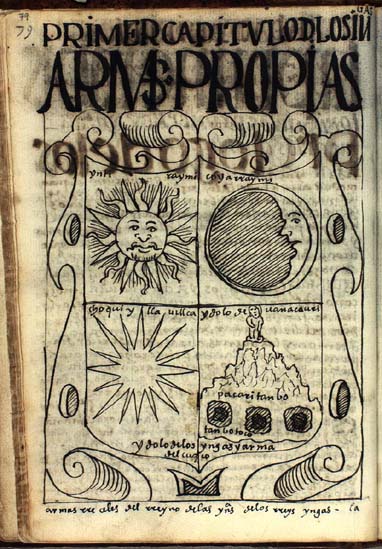
In deciding what belongs to which culture and time period, the school of thought that produced this monolith and the related admixture of the superbly carved features amidst natural rock srtuctures of the sacred valley is a highly perplexing one, i can't think of a direct comparison from any other culture, their work is so alien it can be easily be dismissed as randomized quarrying without creative intent, it's that hard to relate too.
It certainly isn't Incan school of thought, their approach is highly formalized and readily understood, they inherited the earlier works as sacred sites and the related knowledge derived from such, and established cults there, but i suspect that's the extent of their involvement.
It's the concern with the teaching of engineering principles in conjunction with how these can also be sourced in the natural world that is intriguing, the use as felines as a motif of twisting and turning, the crustacean for the principle of catchment...learning made fun.
reply to post by skalla
It's great isn't it, i could spend a long time playing with it and pondering.
A good quality video;
Thanks, yes the name is from 'Saywayta' meaning 'place of orientation', the raised platform there was set to the cardninal directions, the video you posted also referances the monoltihs relationship to the four principle directions...so i guess the principles worked onto the stone were considered of central importance.
reply to post by punkinworks10
I'm totally incapable of specializing in anything....
reply to post by FlyInTheOintment
I think in these regards it's important to recall that the Inca themselves believed their ancestors to have emerged from three cave portals within the sacred valley, this will be with regards to the sacred mount having inter-connectivity with the three levels of existence, descent from the highest levels to the lowest.

In deciding what belongs to which culture and time period, the school of thought that produced this monolith and the related admixture of the superbly carved features amidst natural rock srtuctures of the sacred valley is a highly perplexing one, i can't think of a direct comparison from any other culture, their work is so alien it can be easily be dismissed as randomized quarrying without creative intent, it's that hard to relate too.
It certainly isn't Incan school of thought, their approach is highly formalized and readily understood, they inherited the earlier works as sacred sites and the related knowledge derived from such, and established cults there, but i suspect that's the extent of their involvement.
It's the concern with the teaching of engineering principles in conjunction with how these can also be sourced in the natural world that is intriguing, the use as felines as a motif of twisting and turning, the crustacean for the principle of catchment...learning made fun.
reply to post by skalla
It's great isn't it, i could spend a long time playing with it and pondering.
A good quality video;
edit on 18-4-2013 by Kantzveldt because: (no reason given)
Originally posted by rickymouse
carving and grinding rock isn't easy. You got to remember that these people were not supposed to have tools made of iron. I got power tools and have to grind for a long time to make a little object or carve some letters. Looks like these people were dedicated to their art. Good thread. It is easier to find good archeology articles here on ATS than if I go looking for them. When I search blindly, I always run into the same old commercialized crap over and over.
They had tools made of a particularly hard bronze, due to the chemical makeup of the copper in the area.
The civilization predating the Inca also had the same metal tools.
Smoothing stone surfaces was not accomplished with metal tools, however, and neither was quarrying. Both of these methods involved using other stones. In the case of smoothing, they used pounding stones and then rubbing stones. For quarrying, the simply gouged out the stone with pounders.
Harte
So that was that then, and how much has been understood...?
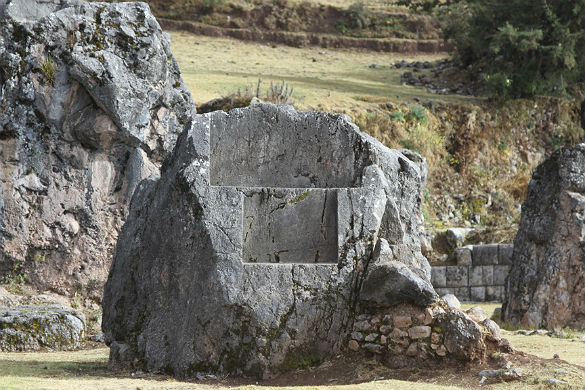
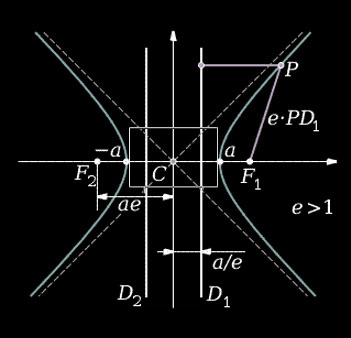
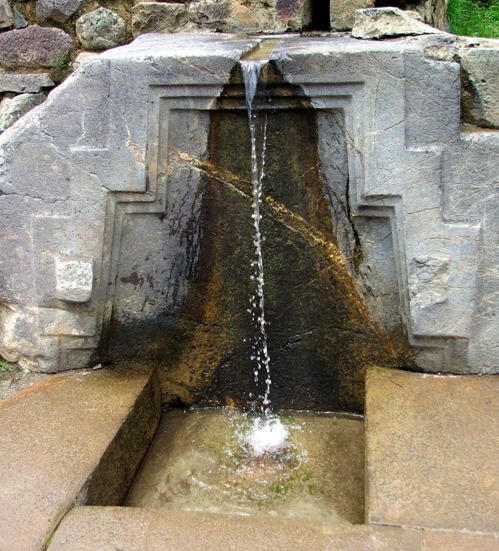
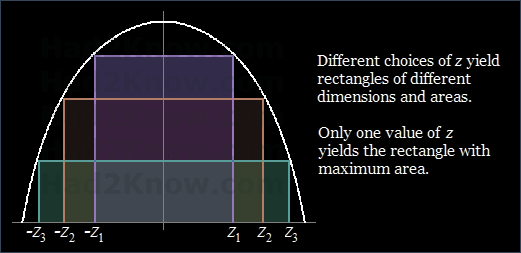






edit on 19-4-2013 by Kantzveldt because: (no reason given)
reply to post by Kantzveldt
> "So that was that then, and how much has been understood...?"
Yes - please do tell Kant.
What are you showing (off) here?
What do you have (seemingly) understood?
Since you said in one of your (many) other threads that you can't do math (if I remember correctly... but I'm sure that I can find it!)... ?
It would be nice if you could elaborate on (for example... ) the connection of those 5 pics in your post?
You know its not all about patterns and if you LIKE them to be alike.
It may be about understanding what they REPRESENT in the 1st place.
But I know from our "correspondence" that we are not on "the same page" concerning "knowledge" - so I won't hold my breath.
A
> "So that was that then, and how much has been understood...?"
Yes - please do tell Kant.
What are you showing (off) here?
What do you have (seemingly) understood?
Since you said in one of your (many) other threads that you can't do math (if I remember correctly... but I'm sure that I can find it!)... ?
It would be nice if you could elaborate on (for example... ) the connection of those 5 pics in your post?
You know its not all about patterns and if you LIKE them to be alike.
It may be about understanding what they REPRESENT in the 1st place.
But I know from our "correspondence" that we are not on "the same page" concerning "knowledge" - so I won't hold my breath.
A
reply to post by Cancerwarrior
Your theory doesn't sound crazy at all! i agree with you actually.
I do believe we have had many advanced civilizations in the past. I also believe that natural cataclysm's have destroyed them and I also believe some may have been destroyed in wars. People always want to question "where is the proof" yet the only thing left standing after tens of thousands of years would be these stone monuments! I dont think you are going to find tools or machines or whatever they used back then.
I think these monuments are proof yet people want to deny it and try and explain it away in todays terms when you really look at it that doesnt make sense. These monuments (not just this one) are clearly made by advanced people with technology of their own. Too many people want to think that because they didnt have our technology they weren't advanced. I just don't believe that.
OP this is very cool! I have never heard of it before! Thanks for this. I needed something to read besides all the doom and gloom out there right now. This will keep me occupied for days!
Your theory doesn't sound crazy at all! i agree with you actually.
I do believe we have had many advanced civilizations in the past. I also believe that natural cataclysm's have destroyed them and I also believe some may have been destroyed in wars. People always want to question "where is the proof" yet the only thing left standing after tens of thousands of years would be these stone monuments! I dont think you are going to find tools or machines or whatever they used back then.
I think these monuments are proof yet people want to deny it and try and explain it away in todays terms when you really look at it that doesnt make sense. These monuments (not just this one) are clearly made by advanced people with technology of their own. Too many people want to think that because they didnt have our technology they weren't advanced. I just don't believe that.
OP this is very cool! I have never heard of it before! Thanks for this. I needed something to read besides all the doom and gloom out there right now. This will keep me occupied for days!
reply to post by mblahnikluver
I remember reading an article once about what would happen to some of our present day building and monuments if humans suddenly all died and nobody maintained them anymore. If I remember correctly it said that almost everything would have turned to rust and dust in 1,000 years time which in geological terms is only the blink of an eye. Most people can't seem to grasp the concept of what a short span of time that really is in our "we are the best because we have cellphones" society.
And I agree with you about the ancients. That is why every time someone present day tries to recreate megalithic monuments like the Giza pyramids with nothing but the supposed tools available at the time like ropes and ramps and copper chisels it always ends in failure.
I remember reading an article once about what would happen to some of our present day building and monuments if humans suddenly all died and nobody maintained them anymore. If I remember correctly it said that almost everything would have turned to rust and dust in 1,000 years time which in geological terms is only the blink of an eye. Most people can't seem to grasp the concept of what a short span of time that really is in our "we are the best because we have cellphones" society.
And I agree with you about the ancients. That is why every time someone present day tries to recreate megalithic monuments like the Giza pyramids with nothing but the supposed tools available at the time like ropes and ramps and copper chisels it always ends in failure.
reply to post by Cancerwarrior
Yup I saw that too. I was on Life After People. So something that is 10k years old wouldn't last esp if it was made out of metal BUT things made out of stone would still be around!
Yea I love the argument on the Pyramids. I will never believe the mainstream views on how they were built. If it was that easy then they would be able to build a pyramid today with all the tech we have but they can't!
Yup I saw that too. I was on Life After People. So something that is 10k years old wouldn't last esp if it was made out of metal BUT things made out of stone would still be around!
Yea I love the argument on the Pyramids. I will never believe the mainstream views on how they were built. If it was that easy then they would be able to build a pyramid today with all the tech we have but they can't!
reply to post by Ansar
Well, it's a teaching device and i posited the open question have we understood all the information that is provided within the model.
I've already pointed out here that the concern cannot only be with the flow management of water, as also the concern with inset vertical niches is present, and that these are some of the most enigmatic features of the sacred valley, features such as these;
So they're on the model, we should try and understand them, right...?
I was of course dropping the hint with the images that i posted that the relationship of parabola and rectangles will need to be considered, and further to that the principles flow and movement through space time as generated by parabola.
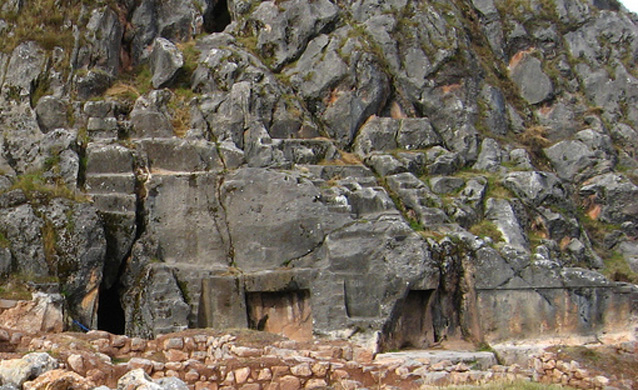

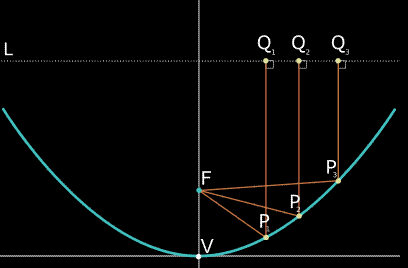
One needs to take up the challenge of the Andean portals, the rectangular niche that is the portal into the heart of the sacred mountain, other cultures raised this question and challenge, notably the Egyptians...and of course i'm aware of what they're given to represent, just that i go beyond face value.
I did mention that i don't do mathematics, just pattern, but then again mathematics is just an abstraction of such, a concern with quantity.
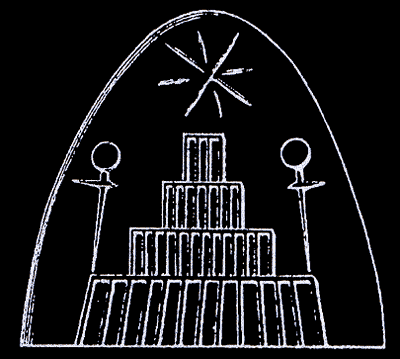
It's quality that counts though...ironically
Well, it's a teaching device and i posited the open question have we understood all the information that is provided within the model.
I've already pointed out here that the concern cannot only be with the flow management of water, as also the concern with inset vertical niches is present, and that these are some of the most enigmatic features of the sacred valley, features such as these;
So they're on the model, we should try and understand them, right...?
I was of course dropping the hint with the images that i posted that the relationship of parabola and rectangles will need to be considered, and further to that the principles flow and movement through space time as generated by parabola.



One needs to take up the challenge of the Andean portals, the rectangular niche that is the portal into the heart of the sacred mountain, other cultures raised this question and challenge, notably the Egyptians...and of course i'm aware of what they're given to represent, just that i go beyond face value.
I did mention that i don't do mathematics, just pattern, but then again mathematics is just an abstraction of such, a concern with quantity.

It's quality that counts though...ironically
edit on 19-4-2013 by Kantzveldt because: (no reason given)
This monolith would be familiar to a Mound Priest. I one studies the layout of the mounds of ancient North America, one would detect a similar
application of what, for lack of a better term, could be described as a kind of feng shui of hydrodynamics, also involving acoustics, and
mineralogy.
This is complex, involves practical terraforming with the intent of producing certain macro and micro climates, introduction of stable and migratory flora and fauna, all with a script, or narrative, called myth by modern man.
That would be the modern description. The Priest might just say just application of old instructions, a complex form of gardening, to restore ecosystems to original forms. Or just landing on the beach, with lots of sand to play with.
This is complex, involves practical terraforming with the intent of producing certain macro and micro climates, introduction of stable and migratory flora and fauna, all with a script, or narrative, called myth by modern man.
That would be the modern description. The Priest might just say just application of old instructions, a complex form of gardening, to restore ecosystems to original forms. Or just landing on the beach, with lots of sand to play with.
Originally posted by Cancerwarrior
reply to post by mblahnikluver
I remember reading an article once about what would happen to some of our present day building and monuments if humans suddenly all died and nobody maintained them anymore. If I remember correctly it said that almost everything would have turned to rust and dust in 1,000 years time which in geological terms is only the blink of an eye. Most people can't seem to grasp the concept of what a short span of time that really is in our "we are the best because we have cellphones" society.
And I agree with you about the ancients. That is why every time someone present day tries to recreate megalithic monuments like the Giza pyramids with nothing but the supposed tools available at the time like ropes and ramps and copper chisels it always ends in failure.
That's a fascinating thought. One thing you can do is to look at google streetview and visit the vintage postcard trading sites. You can see how places looked like in the 1880's, 1930's and how they look now 80 years later.
Buildings get modified, but monuments remain.
One question is, if that really is a scale model, where is the real-sized place.
There are scale model of several cities:
Edinburgh: www.flickr.com...
Rome: www.unicaen.fr...
These were made after the city was built.
Perhaps the picture above was a model of a mountaintop
reply to post by Kantzveldt
S&F for another worthy thread. Good video. I'll be looking for Brien Foerster books.
S&F for another worthy thread. Good video. I'll be looking for Brien Foerster books.
Originally posted by FlyInTheOintment
...
I know you'll have a shedload of professional debunkers & armchair archaeologists who claim that everything in Peru is the work of the Incas - but the Inca themselves claim no knowledge of who built the megalithic structures, except for the oral legends of advanced 'gods' with strange powers....
... As it is, actual Incan stonework at sites like Macchu Piccu is shoddy, plugging breaches where the original pre-Inca stonework has been damaged - yet the 'academics' claim that such piles of rubble represent the Inca before they became skillful masons. The comparison in terms of skill, with regards actual Inca stonework & the megalithic pre-Inca stonework, is equivalent to the writing skills of a four-year-old (who can just about spell 'dog' and 'star' as words on a page), compared to the prosaic brilliance of JRR Tolkien. There is no comparison....
Couldn't have said it better.
Edgar Cayce (died 1945) called the advanced civilization, that pre-dated the Inca, Oz or Og.
The Incas were a Neolithic people who had not yet discovered the wheel when the Spaniards discovered them. Yeah, like the Incas built Puma Punku.
edit on 19-4-2013 by AuranVector because: brain fart
new topics
-
Chronological time line of open source information
History: 6 minutes ago -
A man of the people
Diseases and Pandemics: 1 hours ago -
Ramblings on DNA, blood, and Spirit.
Philosophy and Metaphysics: 1 hours ago -
4 plans of US elites to defeat Russia
New World Order: 3 hours ago -
Thousands Of Young Ukrainian Men Trying To Flee The Country To Avoid Conscription And The War
Other Current Events: 6 hours ago -
12 jurors selected in Trump criminal trial
US Political Madness: 9 hours ago -
Iran launches Retalliation Strike 4.18.24
World War Three: 9 hours ago -
Israeli Missile Strikes in Iran, Explosions in Syria + Iraq
World War Three: 10 hours ago
top topics
-
George Knapp AMA on DI
Area 51 and other Facilities: 15 hours ago, 26 flags -
Israeli Missile Strikes in Iran, Explosions in Syria + Iraq
World War Three: 10 hours ago, 16 flags -
Iran launches Retalliation Strike 4.18.24
World War Three: 9 hours ago, 6 flags -
Not Aliens but a Nazi Occult Inspired and then Science Rendered Design.
Aliens and UFOs: 15 hours ago, 5 flags -
Thousands Of Young Ukrainian Men Trying To Flee The Country To Avoid Conscription And The War
Other Current Events: 6 hours ago, 5 flags -
12 jurors selected in Trump criminal trial
US Political Madness: 9 hours ago, 4 flags -
4 plans of US elites to defeat Russia
New World Order: 3 hours ago, 2 flags -
Ramblings on DNA, blood, and Spirit.
Philosophy and Metaphysics: 1 hours ago, 1 flags -
A man of the people
Diseases and Pandemics: 1 hours ago, 1 flags -
Chronological time line of open source information
History: 6 minutes ago, 0 flags
active topics
-
4 plans of US elites to defeat Russia
New World Order • 12 • : RussianTroll -
Running Through Idiot Protestors Who Block The Road
Rant • 111 • : TheWoker -
Chronological time line of open source information
History • 0 • : ADVISOR -
12 jurors selected in Trump criminal trial
US Political Madness • 25 • : Dandandat3 -
Thousands Of Young Ukrainian Men Trying To Flee The Country To Avoid Conscription And The War
Other Current Events • 4 • : Shoshanna -
African "Newcomers" Tell NYC They Don't Like the Free Food or Shelter They've Been Given
Social Issues and Civil Unrest • 19 • : Scratchpost -
A man of the people
Diseases and Pandemics • 2 • : midicon -
The Fight for Election Integrity Continues -- Audits, Criminal Investigations, Legislative Reform
2024 Elections • 4139 • : IndieA -
Louisiana Lawmakers Seek to Limit Public Access to Government Records
Political Issues • 5 • : Shoshanna -
Mood Music Part VI
Music • 3060 • : TheWoker
